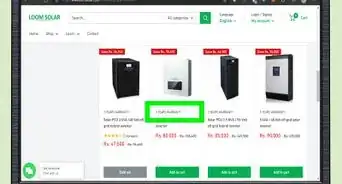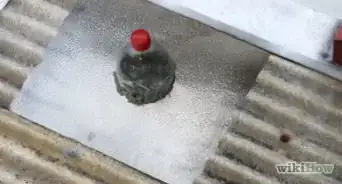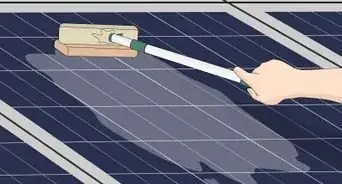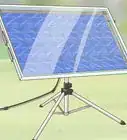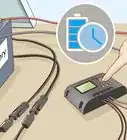This article was co-authored by Guy Gabay. Guy Gabay is a Solar Energy Contractor and the CEO of AmeriGreen Builders, a full-service solar energy, roofing, HVAC and window installation company based in the greater Los Angeles, California region. With over eight years of experience in the construction industry, Guy leads the AmeriGreen team focusing on bringing an educational approach to energy efficient home upgrades. Guy holds a B.S. in Marketing from California State University - Northridge.
There are 12 references cited in this article, which can be found at the bottom of the page.
This article has been viewed 77,050 times.
Solar panels provide renewable energy for your home, which helps the environment and reduces your electricity bill. But not all panels are alike. The material a panel is made of, what solar inverter it uses, and how it mounts to your roof determines what environments it works best in. Before you buy solar panels for your home, research the different factors and decide which option is right for you.
Things You Should Know
- When choosing solar panels, you'll want to consider the panel material, the type of solar inverter, and the type of mount.
- Choose a brand that offers at least a 10-year warranty for product & materials and a 25-year warranty for performance.
- You may be able to save 30-50% off the cost of your solar panels by applying for a government rebate.
Steps
Picking a Panel Material
-
1Choose monocrystalline solar panels for efficiency. Monocrystalline solar panels are the best at converting light to energy because of their high silicon purity. That being said, monocrystalline solar panels are often the most expensive—this option is best if you want the highest productivity and price tag.[1]
- Monocrystalline solar panels cost between $300-700 USD per panel.
- Monocrystalline solar panels also produce the most waste when they're manufactured. If you're buying solar panels to go green, another material may suit your needs better.
- All solar panels are made of silicon. The higher the silicon purity, the better your panel will work, which is why monocrystalline panels are ideal.
-
2Go with polycrystalline solar panels for an environmentally-friendly option. Polycrystalline solar panels utilize all of the silicon material they're manufactured with, making them the "greenest" panel option. Polycrystalline solar panels are also cheaper than monocrystalline panels, though they are not quite as efficient.[2]
- Polycrystalline solar panels usually cost between $200-500 USD per panel.
- Polycrystalline solar panels do not do as well in warm temperatures. Hot climates with temperatures regularly above around 80 °F (27 °C) are not suitable for polycrystalline panels.
Advertisement -
3Buy thin-film solar panels for the most budget-friendly option. Thin-film panels are cost-efficient to make and are usually the cheapest option. They also, however, degrade faster than other panels. Choose thin-film if you need a simple solar panel that may need more repairs over the years.[3]
- Polycrystalline solar panels usually cost between $175-300 USD per panel.
- Thin-film panels usually need the most space and are less practical for smaller homes. They may need up to twice as much room as a mono- or polycrystalline solar panel with the same energy output.
-
4Buy amorphous solar panels for smaller homes. Amorphous solar panels are a subset of thin-film solar panels. Generally, they are smaller than other thin-film panels. Through a process called "stacking," which involves multiple layers of amorphous silicon cells, these panels can reach high levels of efficiency, around twice as high as other thin-film solar panels.[4]
- Amorphous solar panels are more expensive than other thin-film panels.
- Amorphous solar panels generally cost between $200-400 USD per panel.
Picking a Solar Panel Brand
-
1Do research on solar panel manufacturers. The solar panel industry has grown a lot in the past few years. Currently, there are already many good and reliable solar panel manufacturers out there. However, there have also been many manufacturers that instead offer cheap and low-quality solar panels, many of which are from China. Although it is also important to note that many of the top solar panel manufacturers are also from China. This means that we should not judge a solar panel's quality based just on the country of origin.
- Be sure to check the manufacturer's performance warranty in addition to the product/materials warranty. Industry standard is 10 years for product/materials and 25 years for performance.[5]
-
2Look at Bloomberg's Tier 1 Solar Panel list. Each year, Bloomberg New Energy Finance publishes a tier 1 list of solar panel manufacturers as a way to guide investors on which solar panel manufacturers are good to invest in terms of solar projects. Although this list is not a direct indication of quality, we can still use this to separate the good quality solar panels from the low-quality ones.
Selecting a Solar Inverter
-
1Choose central inverters for their track record. Central inverters are the oldest and most common solar inverter type. These inverters are also usually the most reliable option, as they function well in harsh climates and have been researched the most by environmental scientists.[6]
- Central inverters can cost between $1500-2400 USD.
- Inverters are like the brain of the solar panel system—they monitor the output and performance of the solar panels themselves.[7]
-
2Pick string inverters for the least expensive option. String inverters are a newer form of central inverters that connect a group of small panels together so they function as one. They are also usually cheaper than central inverters and the most budget-friendly inverter choice.[8]
- String inverters may cost between $1400-2000 USD
- String inverters work best on houses with a flat roof.
- Compared to power optimizers and microinverters, string inverters are an older technology.
-
3Buy power optimizers if you want to use your panel in partial shade. This type of solar inverter is embedded into the solar cell, which helps them work in shady locations. Choose power optimizers if your home receives 6-8 hours of direct sunlight with periods of partial shade in-between.
- Power optimizers may cost $2000+ USD, depending on the strength of the device.
- Like all solar panels, power optimizers will not work in perpetually cloudy environments.
-
4Choose microinverters for long-term use. Microinverters generally last longer than other solar panel types. Unlike other inverters, which stop working if a single panel fails, microinverters keep working with a broken panel. Because of their long lifespan, however, microinverters are also the most expensive option.[9]
- Microinverters can cost up to $2300-2500 USD.
- Microinverters are often easiest to install.
Deciding on a Mounting Option
-
1Pick a ballasted mount if you live in an area with low wind. Solar panels on a ballasted mount are attached to the roof at an angle several feet or meters above the roof. Ballasted mounts are efficient because they do not penetrate the roof and receive more direct sunlight. Because this design makes them more vulnerable to being blown away, however, they do not work well in windy climates. [10]
- On the whole, ballasted systems tend to be the cheapest mounting option. They can cost between $50-100 USD per panel.
- Ballasted systems generally cover the whole roof, which can make maintenance or remodeling hard.
-
2Buy a mechanically-attached mount for the most secure option. Solar panels on a mechanically-attached mount are attached tightly to the roof at a slight or no angle. Because mechanically-attached mounts are mounted to the roof beams, they fare well in harsh weather. They also take up less space and are ideal if you need access to your roof often.[11]
- Because mechanically-attached mounts are smaller, they're usually easier on the roof.
- Mechanically-attached mounts may cost between $75-125 per panel.
-
3Pick a hybrid for the benefits of ballasted and mechanically-attached mounts. Hybrid mounts are attached to the roof like mechanically-attached mounts but may be slightly raised or angled like ballasted mounts. This keeps them secure to the roof while receiving more direct sunlight like ballasted mounts.
-
4Choose a fixed mount if you cannot place your panels on the roof. Fixed mounts follow the sun throughout the day. This orients their panel positioning to absorb as much sunlight as possible. If your solar panel is on the ground and receives some shade each day, fixed mounts can help your system convert more energy.
- Fixed mounts can cost between $160-200 per panel.
Considering Additional Factors
-
1Choose a solar panel based on the type of building you're using it in. Depending on whether you're using the solar panels in a residential, commercial, or industrial building, some solar panels may fit your needs better than others. Let the company you're purchasing solar panels from know what kind of building you're using solar panels in so they can help you find the right option.[12]
- If you're buying solar panels for an industrial building, for example, you may want monocrystalline panels for their efficiency at converting energy.
-
2Determine your electrical usage needs before purchasing solar panels. If your building expends a lot of energy, an expensive solar panel that generates more energy may help you save more in the long-term. Consult your past 2 or 3 energy bills to decide whether the solar panel's price or efficiency is a better investment.[13]
- If your electricity bill is high every month and you plan to live in your house for a long time, for example, you may choose a monocrystalline solar panel. If you do not use as much electricity, however, a thin-film solar panel may fit your needs.
- To get a more holistic view of your energy use, you should look at your bills for an entire year. That way, you'll have an accurate sense of your energy consumption patterns even as they vary from season to season.[14]
-
3Set a budget before shopping around for solar panels. Between the panel material, solar inverter type, and other factors, the cost of a solar panel can add up over time—if you're not careful, you may end up overspending. Decide how much you're willing to spend beforehand so you don't put too much money into your panels without realizing it.
- Shop around at several different solar panel companies to compare deals before purchasing a system.
-
4Check to see if you qualify for government rebates for buying solar panels. Some countries offer government-issued tax rebates for solar panel installation. If your country offers this program, you may be able to reduce the net cost of your solar panel. Consult a financial advisor to discover solar panel tax rebates in your country.[15]
- Depending on your country, you may receive between 30-50% off of your net cost in rebates.
Help Choosing a Solar Panel
Expert Q&A
-
QuestionHow do I know which solar panel I need?
 Guy GabayGuy Gabay is a Solar Energy Contractor and the CEO of AmeriGreen Builders, a full-service solar energy, roofing, HVAC and window installation company based in the greater Los Angeles, California region. With over eight years of experience in the construction industry, Guy leads the AmeriGreen team focusing on bringing an educational approach to energy efficient home upgrades. Guy holds a B.S. in Marketing from California State University - Northridge.
Guy GabayGuy Gabay is a Solar Energy Contractor and the CEO of AmeriGreen Builders, a full-service solar energy, roofing, HVAC and window installation company based in the greater Los Angeles, California region. With over eight years of experience in the construction industry, Guy leads the AmeriGreen team focusing on bringing an educational approach to energy efficient home upgrades. Guy holds a B.S. in Marketing from California State University - Northridge.
Solar Energy Contractor The right solar panel for you depends on your energy consumption patterns over a year, the space available on your roof and what direction panels would be placed, and how many trees are around your home. You'll want to set up a discovery call or a solar site evaluation to get a professional opinion on what types of solar panels would be best for you.
The right solar panel for you depends on your energy consumption patterns over a year, the space available on your roof and what direction panels would be placed, and how many trees are around your home. You'll want to set up a discovery call or a solar site evaluation to get a professional opinion on what types of solar panels would be best for you. -
QuestionHow do I calculate the requirement of panels for a home?
 Shannon ParahaCommunity AnswerYou can calculate solar panels you need by multiplying your household's hourly energy requirement by the peak sunlight hours for your area and dividing that by a panel's wattage.
Shannon ParahaCommunity AnswerYou can calculate solar panels you need by multiplying your household's hourly energy requirement by the peak sunlight hours for your area and dividing that by a panel's wattage. -
QuestionDoes a copper or metal roof produce a hotter micro-environment making microinverters shorter lived or less efficient?
 Tristan FoxCommunity AnswerA metal roof will produce more heat in a/an micro-environment, because metal can get hotter and store that heat inside of it.
Tristan FoxCommunity AnswerA metal roof will produce more heat in a/an micro-environment, because metal can get hotter and store that heat inside of it.
References
- ↑ https://blog.pickmysolar.com/monocrystalline-solar-panels-polycrystalline-comparison
- ↑ https://www.youtube.com/watch?v=6yeftR8MBT8&feature=youtu.be&t=17
- ↑ https://www.bnl.gov/education/static/VFP/colloquium/xu_colloquium2015.pdf
- ↑ http://www.altenergy.org/renewables/solar/common-types-of-solar-cells.html
- ↑ Guy Gabay. Solar Energy Contractor. Expert Interview. 4 August 2020.
- ↑ https://www.youtube.com/watch?v=hS-glpV7-b4&feature=youtu.be&t=59
- ↑ Guy Gabay. Solar Energy Contractor. Expert Interview. 4 August 2020.
- ↑ https://www.youtube.com/watch?v=hS-glpV7-b4&feature=youtu.be&t=34
- ↑ http://www.energysavingtrust.org.uk/sites/default/files/Solar%20inverters.pdf
- ↑ https://www.roofingcontractor.com/articles/90272-solar-racking-ballasted-or-mechanically-attached
- ↑ https://www.roofingcontractor.com/articles/90272-solar-racking-ballasted-or-mechanically-attached
- ↑ http://www.greenworldinvestor.com/2015/07/15/5-important-factors-to-consider-before-buying-a-solar-panel/
- ↑ http://www.ledwatcher.com/8-factors-to-consider-before-installing-solar-panels/
- ↑ Guy Gabay. Solar Energy Contractor. Expert Interview. 4 August 2020.
- ↑ https://www.energysage.com/solar/cost-benefit/solar-incentives-and-rebates/
About This Article
There are a few things to consider when you’re choosing solar panels to suit your needs. If efficiency is important to you, go for monocrystalline panels. For a more environmentally friendly and cheaper option, choose polycrystalline panels. Thin-film and amorphous panels are even cheaper but they also degrade faster and may need repairing over the years. You’ll also need to choose an inverter to convert your solar energy into electricity. Central inverters are the most reliable, especially under harsh weather conditions, while string inverters are a more affordable option. Micro-inverters generally last longer and will keep working even if one panel fails, but they’re also the most expensive option. For more tips, including how to choose a mounting system for your solar panels, read on!
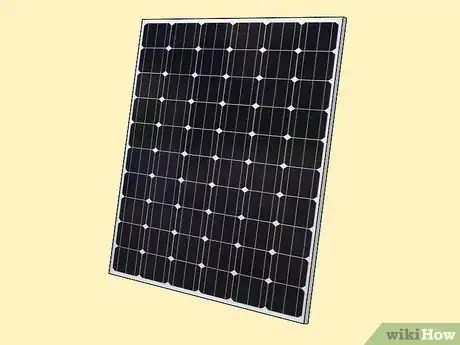
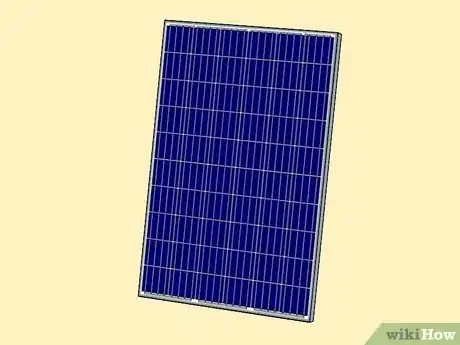

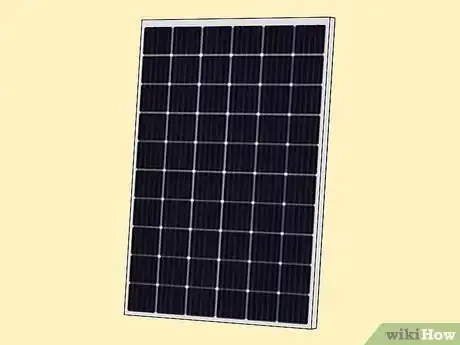
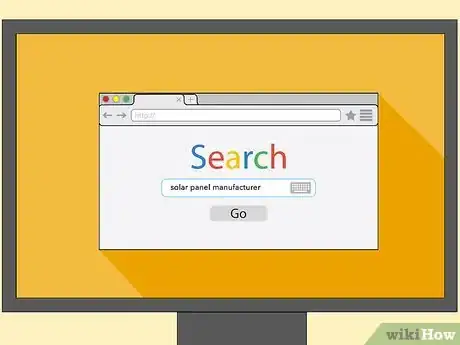



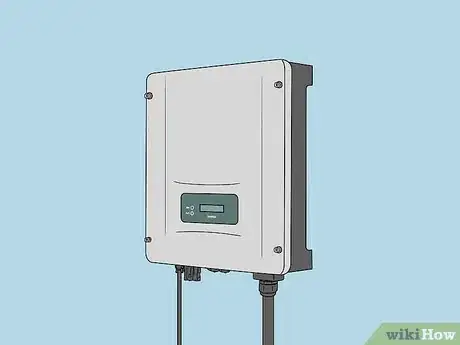


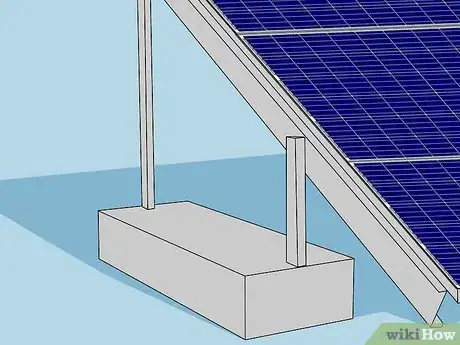
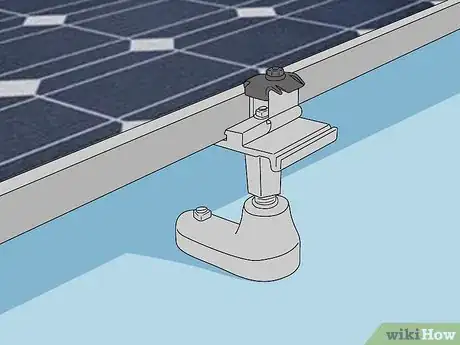
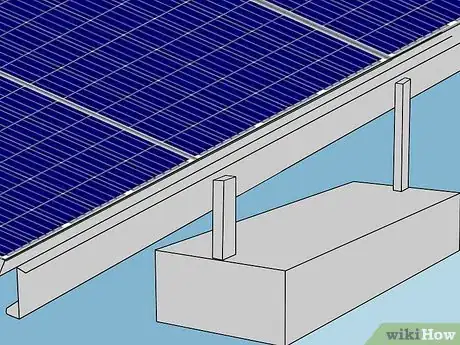
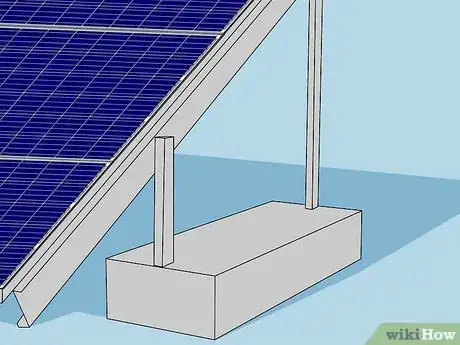

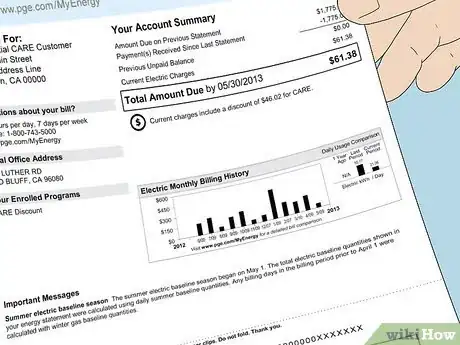
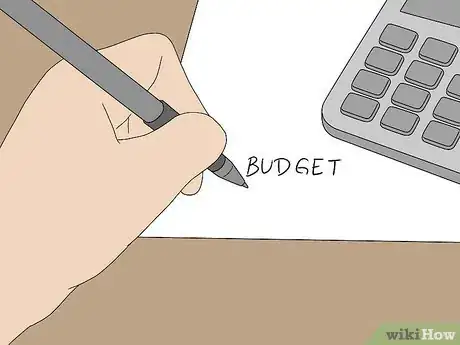



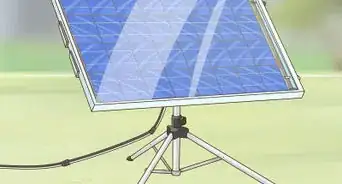
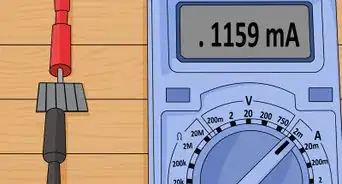
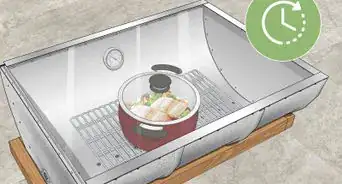
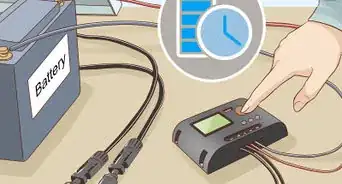
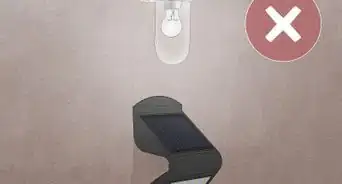
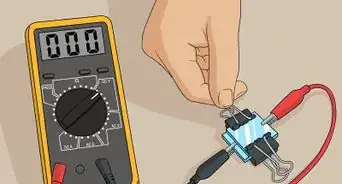
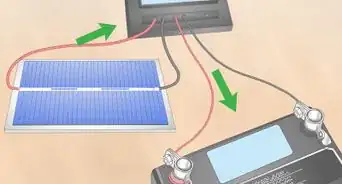

-Step-12-Version-2.webp)
-Power-Generator-Step-11-Version-2.webp)

